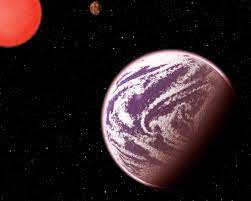
Mini-Neptunes and Super-Earths: How swollen planet can be a missing link
When astronomers see planets outside our solar system, called exoplanets, often they only have minimal information they can use to classify it. Two key factors that they often know are the size of their planet and mass, where they can determine their density. It helps to categorize it into groups similar to planets that we know, such as rocky planets such as Earth or Mars, or giant gases such as Jupiter or Saturn.
But there are also other types of exoplanets that are not like those found in our solar system. Two examples are super-earth, which is a rocky planet but is far greater than the earth, and mini-neptunes or gas dwarfs, which are smaller than Neptune but have a gas atmosphere above the rocky core.
Recently, new research uses the Hubble Space Telescope and Observatory W. M. Keck has shown how various types of planets can develop. Astronomers have seen two mini-neptune planets that seem to change to super-earth because of their atmospheric loss (published in the astronomical journal).
The two planets are located in a different system, one star that orbits HD 63433, is located 73 years of light, and another star orbits TOI 560, located 103 years of light. Astronomers observed gas escape from both mini-neptunes, which they believed was proof that they lost their atmosphere. It can put them on the road to become a super country.
“Most of the astronomers are suspicious that young, mini-neptunes must have a yawn atmosphere,” said Caltech graduate students Michael Zhang, the lead author of the study (through NASA). “But no one has ever caught it in the process of doing it until now.”
This can help explain astronomical oddities. Most exoplanets are found to have fallen into different size categories, with super-earth usually up to 1.6 times the size of the earth and mini-neptunes between 2 and 4 times the size of the earth. But there are very few planets found between these two sizes. This could be because the mini-neptun turned into super-earths, and the atmospheric difference describes the size difference.
“A planet in a measure gap will have enough atmosphere to suck his fingers, making him intercept higher star radiation and thus allows fast bulk losses,” Zhang said. “But the atmosphere is quite thin so it is lost quickly. This is why a planet won’t stay long.”
There are more oddities to pay attention in one of these systems. In the TOI 560 system, the gas released by the planet does not flow far from the star, as expected, but actually flows towards the star, and the researchers do not know why so.
“As Exoplanet scientists, we have learned to expect unexpected,” said Heather Knutson’s colleague from Caltech. “This exotic world is constantly surprising us with new physics that exceeds what we observe in our solar system.”
You may also like
Archives
Calendar
| M | T | W | T | F | S | S |
|---|---|---|---|---|---|---|
| 1 | 2 | 3 | 4 | 5 | ||
| 6 | 7 | 8 | 9 | 10 | 11 | 12 |
| 13 | 14 | 15 | 16 | 17 | 18 | 19 |
| 20 | 21 | 22 | 23 | 24 | 25 | 26 |
| 27 | 28 | 29 | 30 | 31 | ||

Leave a Reply